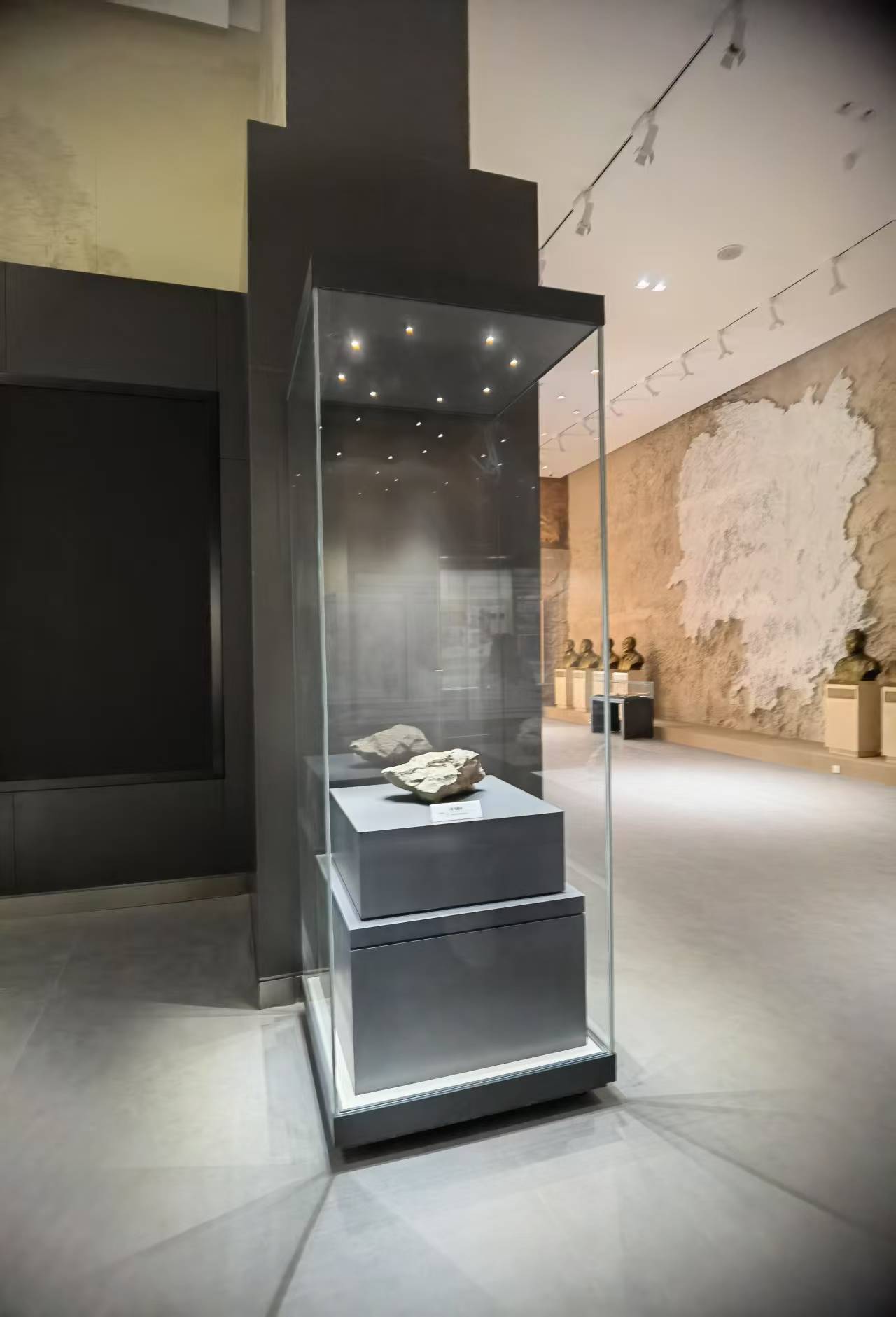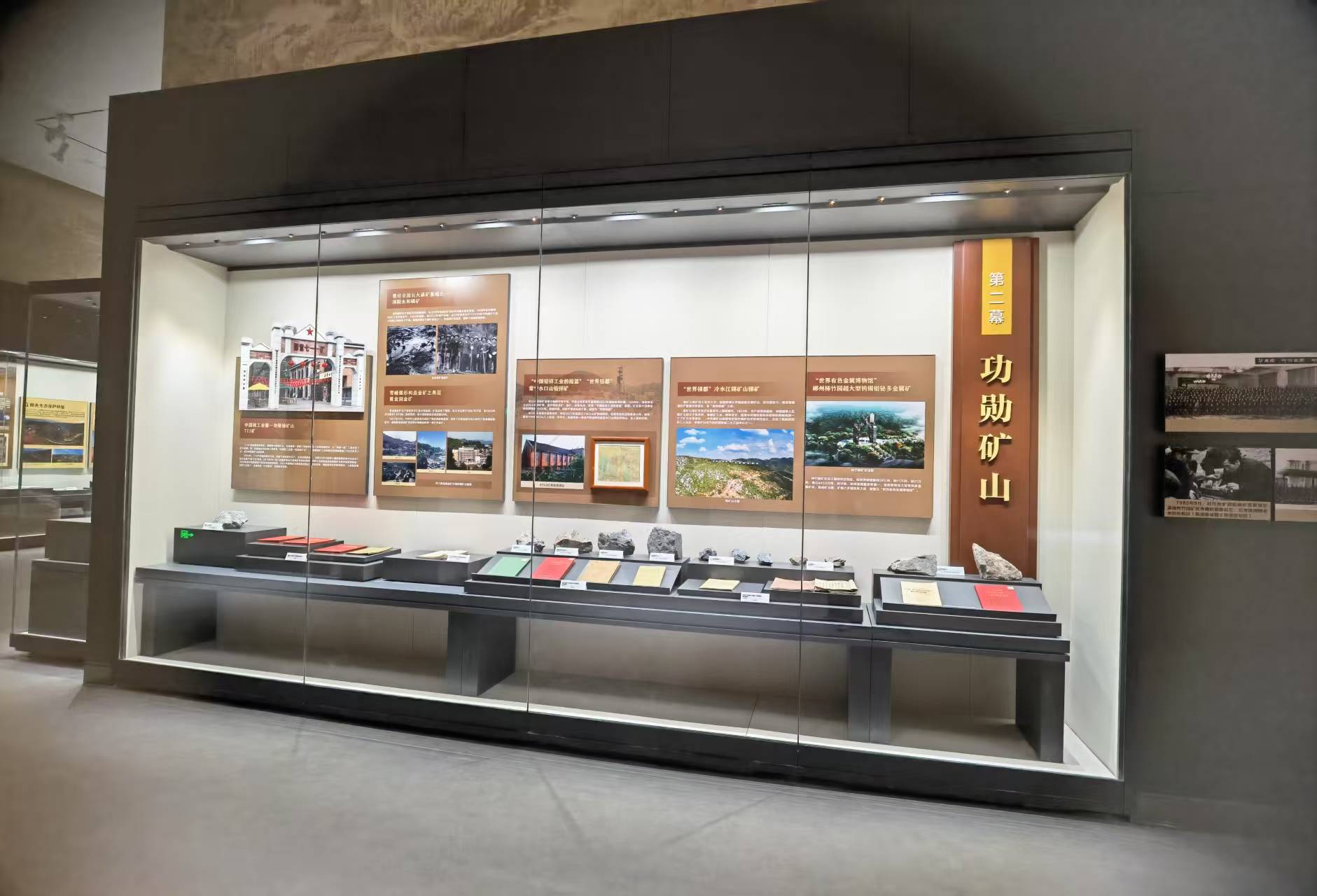& nbsp; As a medium of dialogue between cultural relics and audience, the design of museum display cabinet should take into account safety, appreciation and space adaptability. According to the exhibition needs and spatial layout, modern museum exhibition cabinets can be divided into five core types, each of which has its own characteristics in form, opening mode and display logic.
& nbsp; & nbsp; & nbsp; I. Independent Showcase: Centralized Narrative and Multi-dimensional Viewing
& nbsp; & nbsp; & nbsp; 1. Panoramic independent high
cabinet & nbsp; & nbsp; & nbsp; Features: 360 ° fully transparent glass structure, with metal base or rotating track, to achieve all-round display of cultural relics.
& nbsp; & nbsp; & nbsp; Opening mode: 90 ° side opening or vertical rotation opening, taking into account the security and convenience of exhibits maintenance.
& nbsp; Applicable scenarios: Isolated cultural relics (such as bronzes, jade seals) or works of art requiring immersive experience.
& nbsp; 2. Independent large cabinet (matrix display)
& nbsp; & nbsp; & nbsp; Opening mode: automatic sliding door or sectional lifting opening, convenient for batch cultural relics management.
& nbsp; Applicable scenario: thematic group exhibition (such as porcelain series and coin collection).
& nbsp; 3. Table type independent cabinet (plane focusing)
Features: Low structure design, glass table top tilt 15-30 °, enhance the visibility of plane cultural relics (ancient books, paintings) details.
& nbsp; & nbsp; & nbsp; Opening method: hydraulic lift or drawer-type sliding to ensure safe access to fragile materials.
& nbsp; & nbsp; & nbsp; Applicable scenarios: temporary interactive exhibition areas or precious documents requiring close observation.

& nbsp; 2. Hanging display case: vertical utilization of space and lightness aesthetics
& nbsp; & nbsp; & nbsp; Features: Built-in wall bracket + suspended glass box to minimize floor occupancy.
& nbsp; Opening mode: hydraulic clamshell type, suitable for quick replacement of miniature exhibits (badges, insect specimens).
& nbsp; & nbsp; & nbsp; Applicable scene: interesting display in corridor transition area or children's interaction area.
& nbsp; & nbsp; & nbsp; 2. Large suspended matrix cabinet
& nbsp; & nbsp; & nbsp; Features: Multi-level electric rail system, combined suspension of multiple display units.
& nbsp; & nbsp; & nbsp; Opening mode: remote control of electric translation to realize dynamic switching of modular exhibits.
& nbsp; & nbsp; & nbsp; Applicable scene: three-dimensional narrative or biodiversity display in the Museum of Modern Art.
& nbsp; III. Embedded display case: space integration and privacy protection
& nbsp; Features: 90% of the cabinet is embedded in the wall, leaving only the front display surface, forming a "picture frame" effect.
& nbsp; & nbsp; & nbsp; Opening method: Invisible track translation or air pressure bounce to ensure visual unity between the display cabinet and the wall.
& nbsp; Applicable scene: quiet display of small and medium-sized cultural relics (such as Buddha statues and jade carvings).
& nbsp; & nbsp; & nbsp; 2. Through the cabinet
along the wall & nbsp; & nbsp; & nbsp; Features: Super long linear structure, which can be embedded in sections or independent against the wall to adapt to different wall forms.
& nbsp; & nbsp; & nbsp; Opening mode: multi-stage electric synchronous translation, with a single opening length of 5-8 meters.
& nbsp; Applicable scene: large-scale historical narrative exhibition (such as Silk Road Cultural Relics Group) or immersive scene restoration. 
& nbsp; & nbsp; & nbsp; 1. Traditional + digital composite
cabinet & nbsp; & nbsp; & nbsp; Features: Built-in AR projection, holographic screen or acoustic navigation system in the physical display case.
& nbsp; Interaction logic: Traditional static display is presented when power is off, and dynamic story lines (such as historical animation of cultural relics) are triggered when power is on.
& nbsp; Applicable scenarios: Science and technology museums or complex exhibits requiring in-depth interpretation (such as mechanical devices).
& nbsp; & nbsp; & nbsp; 2. Immersive interactive
cabinet & nbsp; & nbsp; & nbsp; Features: Integrated multi-touch glass, motion sensors and ambient sound system.
& nbsp; Experience mode: The audience's action triggers the content change of the exhibition cabinet (such as gesture rotation of the virtual relic model).
& nbsp; & nbsp; & nbsp; V. Special function display case: environmental control and customized design
& nbsp; & nbsp; & nbsp; 1. Constant temperature and humidity cabinet
& nbsp; Core parameters: sealing ≥ 98%, built-in microclimate adjustment system (± 1 ℃ temperature control, ± 5% RH adjustment).
& nbsp; & nbsp; & nbsp; Opening mode: double safety hydraulic lifting + transition cabin design to avoid damage to cultural relics due to sudden change of environment.
& nbsp; Applicable scene: long-term preservation display of organic cultural relics (silk and bamboo slips).
& nbsp; & nbsp; & nbsp; 2. Anti-seismic display case
& nbsp; Technical features: spring damping base + flexible glass fixing structure, seismic grade ≥ 8.
& nbsp; Applicable scenario: security display of cultural relics in geological museums or high-risk areas.
previous:Display Cabinet Maintenance Strategy: Scientific Maintenance and Long-term Management of Different M
next:Design requirements of independent glass cabinet in museum